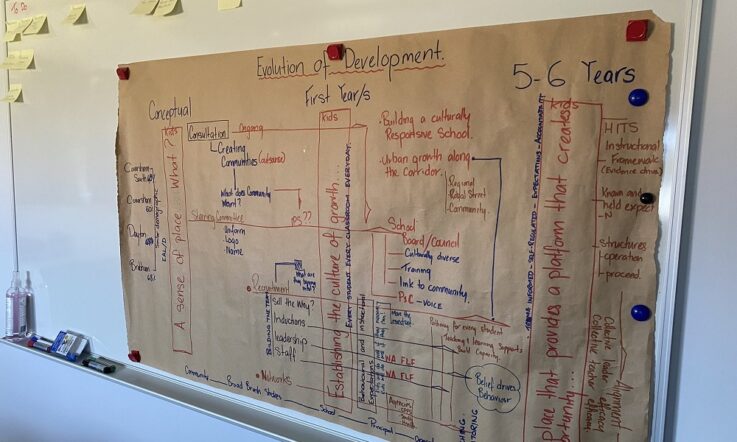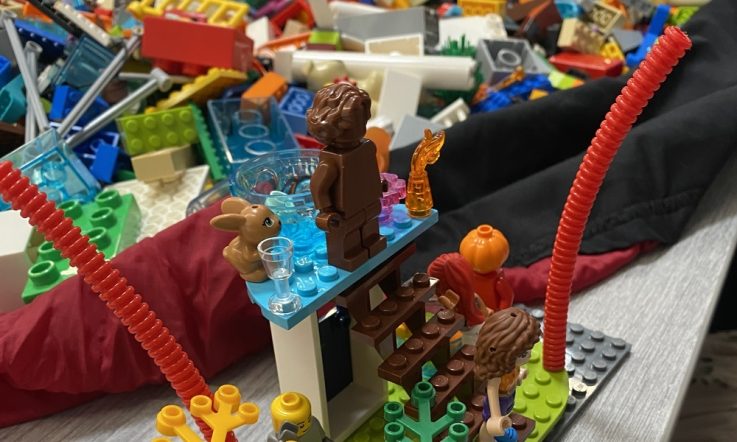As we approach half-way through the school year here in Australia, it is a good time for educators to think about revisiting routines and re-establishing expectations around both student learning and behaviour. In today’s article, Rachael Lehr, Associate Principal at Dayton Primary School in Western Australia shares her advice on how to set the tone for a new school term to get the best out of your students and staff. From creating positive relationships, to setting high expectations and revisiting routines, Rachael shares what has worked in her school setting.
Back in 2022, as the foundation leadership team of Dayton Primary School in Western Australia, Dr Ray Boyd and I were privileged to share our journey of building a school community from the ground up on the first series of Teacher’s School Assembly podcast. Across 11 episodes, plus a bonus one a year later, we shared the rollercoaster journey of turning our ideas into reality.
At the heart of those conversations was our aspiration to build a ‘school of excellence’, grounded in the belief that excellence is not an accident but the result of deliberate and purposeful action. A consistent theme in our leadership has been clarity. From the very beginning, we were clear about what it meant to be part of Team Dayton. Brene Brown’s phrase ‘clear is kind’, from her 2018 book Dare to Lead, has guided our actions.
Since our foundation team stepped through the newly installed doors in 2023, we have worked to ensure transparency in everything we do. Now, over 2 years later, as our student numbers and staff have nearly doubled, that clarity remains just as important.
We began with a bold, clearly articulated vision: to create a sense of belonging that promotes success, engagement, and wellbeing for all. To turn that vision into a reality, we outlined our expectations early. We defined how we would show up for one another, how we would create safe and welcoming learning environments, and how we would teach in ways that ensure each student succeeds.
Every staff member came to Dayton knowing about our instructional learning ecosystem, outlined in our Instructional Playbook. They understood they were expected to teach using our instructional framework, participate in ongoing instructional coaching and professional learning, and work collaboratively through the lens of Ubuntu – ‘I am because we are.’
Being warm and being demanding
We set the tone in our very first term in 2023 by clearly outlining these expectations to the entire school community. Since then, we have followed a consistent cycle of reflection and reset. At the start of each term, we take our team back to ‘what matters most’ and ensure they have the tools to start strong. The goal is simple: to make sure our students benefit from a consistent and intentional approach to teaching and learning.
We open every school year, and each subsequent term, focused on what we believe are the 2 most important elements in successful schools – being warm and being demanding – creating positive relationships and matching these with high expectations and clear routines and structures. We revisit and re-establish the norms of being a student and staff member at Dayton, returning to the foundations that help each child have the best possible start to a new term of learning.

Here are 7 strategies for starting strong each term. Image credit: Rachael Lehr
Transitioning back into routine
Coming back from school holidays can be a big transition, both for students and for staff. That first day alarm is always a reminder that routine is returning. This transition makes it essential to revisit expectations and re-establish classroom flow and rebuild student engagement and attention.
Each term, we focus on 7 key strategies to get back on track for a strong term of learning:
- Reconnect to build a sense of belonging
- Revisit routines – don't assume they're remembered
- Re-establish expectations
- Keep consistency and predictability high
- Rebuild attention and stamina
- Reset class culture with positivity
- Make it feel like a fresh start
While all 7 are important, 3 key areas will be outlined here: routines, expectations, and attention.
Revisit routines
Harry Wong (2018), author of The First Days of School, is quoted as saying that ‘classroom management is not about having the right rules, it’s about having the right routines’. At Dayton, this ethos guides our actions as we explicitly reteach routines every term, just as if it were the beginning of the school year.
We go step-by-step through our expectations for lining up, transitions, engagement and group work. We do practice runs, use visuals to support memory, and positively reinforce the behaviours we want to see. Rather than just reminding students, we reteach, model and rehearse what we expect.
Re-establish expectations
US inventor and engineer Charles Kettering said that ‘high achievement always takes place in the framework of high expectations’. This idea shapes our approach as, each term, we reteach what it means to be a student at Dayton. We revisit our expectations for classrooms, playgrounds, and across the school.
We talk about how we expect students to present their work, listen and respond to others, engage in learning, and follow instructions. We remind students that we expect everyone’s personal best and that every child is capable of learning to a high level. We visit our whole school values with a focus on desired behaviours and consistent reinforcement.
Rebuild attention and stamina
The first of Dehaene’s (2020) 4 pillars of effective learning is attention. Peps Mccrea (2025) notes that ‘what we attend to is what we learn’. If we don’t have our students' attention, even the best lesson plans expertly taught will fall flat. After a break and not having to sustain attention for very long during this time, students often need support to rebuild this skill.
We start each term by reteaching listening expectations and setting clear goals for independent work. We use short, structured activities to gradually build focus. Brain breaks and movement help reset attention, though we choose them carefully to avoid overstimulation. We scaffold focus through visual timers, chunking tasks, and countdowns.
Reconnecting with students
In addition to these 3 key practices, we also embrace moments to reconnect with students, reset the classroom culture, and focus on building a sense of community. We make each new term feel like a fresh start and remind everyone that we are a team and we are in this together. This intentional beginning helps every child feel like they belong and are ready to be their best.
By focusing on a clear vision, consistent high expectations, and deliberate actions, we bring our goal of creating a school of excellence to life every term. Our students thrive because they are known, supported and taught in an environment where clarity, care and high standards guide everything we do.
Dayton Primary School’s Instructional Playbook is available to download via this link.
References
Brown, B. (2018). Dare to lead: Brave work. Tough conversations. Whole hearts. Random House.
Dehaene, S. (2020). How we learn: The new science of education and the brain. Allen Lane.
Mccrea, P. (2025). Orchestrating attention: Precision teaching and learning. Evidence Snacks: https://snacks.pepsmccrea.com/p/orchestrating-attention
Wong, H. K., & Wong, R. T. (2018). The First Days of School: How to Be an Effective Teacher (5th ed.). Harry K. Wong Publications.
Consider some of the strategies Rachael Lehr outlines in this article for starting the term off strong. Which could you use in your school setting? How will you go about implementing them?
What are your priorities for the next term? Is this a school-wide approach or something you are working on in your own practice? What supports do you need to ensure you meet the goals you set for the beginning of term?



